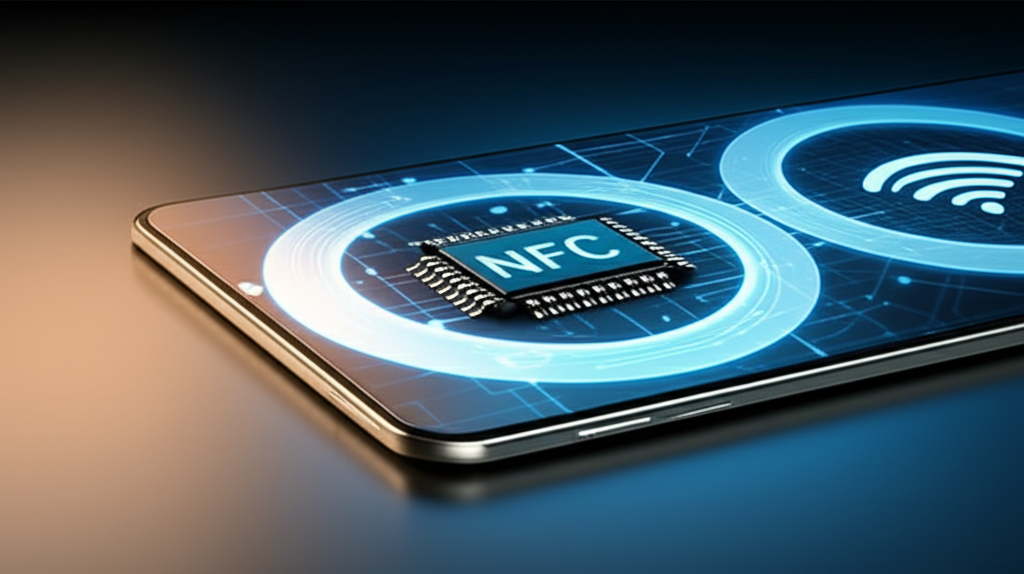Getting Started with Smart Packaging: NFC vs RFID Tags - Which is Right for Your Product?
Smart packaging is becoming a new bridge connecting products and consumers. It's not just a container to protect goods, but also a medium for brands to communicate with consumers. NFC (Near Field Communication) and RFID (Radio Frequency Identification) are two mainstream smart packaging technologies, each with its own advantages. Faced with a wide array of choices, are you also feeling confused? This article will delve into the comparison between NFC and RFID tags to help you choose the most suitable smart packaging solution based on your product characteristics, truly empowering your product through packaging.
Introduction: Smart Packaging - A Bridge Connecting Products and Consumers
Smart packaging, as the name suggests, integrates information technology, sensing technology, automation technology, and other technologies into traditional packaging to enable packaging to have functions such as sensing, identification, and interaction. It not only protects and beautifies products, but also enhances brand value, improves user experience, and even optimizes supply chain management.
Imagine consumers scanning the QR code on the packaging to learn about the product's production process, authenticity information, and even participate in interactive games to earn points. For brands, smart packaging can collect user behavior data, optimize marketing strategies, and increase repurchase rates.
Among many smart packaging technologies, NFC and RFID are undoubtedly the two most widely used. They are like "twins" in the field of smart packaging, each shining with unique light. However, when facing NFC and RFID, which is your "best partner"? This is the core question this article aims to explore: NFC and RFID, which is more suitable for your product?
Background Introduction: Brief Description of NFC and RFID Technology Principles
Before delving into the comparison, let's first briefly understand the technical principles of NFC and RFID.
-
NFC (Near Field Communication) Technology: As the name suggests, NFC is a short-range wireless communication technology. It operates at a high frequency (13.56MHz) and the communication distance is usually within a few centimeters. You can think of it as a "face-to-face" communication method, requiring devices to be very close to transmit data. The biggest feature of NFC is point-to-point communication, which means that two devices can directly exchange data.
-
RFID (Radio Frequency Identification) Technology: RFID is a technology that uses radio frequency signals to automatically identify target objects. It achieves non-contact two-way communication through radio frequency signals, thereby achieving identification purposes. RFID tags can be identified by readers at a longer distance (several meters or even further) without the need for close contact like NFC.
In simple terms, NFC is like "swiping a card," requiring proximity to complete the transaction; while RFID is like ETC on a highway, which can automatically identify from a distance.
Core Comparison: Analysis of the Advantages and Disadvantages of NFC and RFID Tags
Having understood the basic principles of NFC and RFID, we will next conduct an in-depth comparison from the aspects of advantages and disadvantages to help you better understand their characteristics.
NFC Tags: A Powerful Tool for Close-Range Interaction
-
Advantages:
- High Security: Due to the extremely short communication distance, it is difficult to remotely steal information from NFC tags, making them highly secure. This is crucial for high-value products or products with high anti-counterfeiting requirements.
- Strong Interactivity: NFC supports two-way communication and can interact with devices such as smartphones to achieve various interactive marketing activities, such as product traceability, anti-counterfeiting verification, membership points, interactive games, etc.
- Diverse Application Scenarios: NFC has a wide range of application scenarios and can be applied to almost any scenario that requires close-range interaction.
-
Disadvantages:
- Short Communication Distance: This is the biggest limitation of NFC. Information must be read at close range, which may be inconvenient in some scenarios.
- High Cost: Compared to RFID tags, NFC tags are relatively expensive, which may increase product packaging costs.
- Reader Device Limitations: Not all devices support NFC functionality, which limits the application scope of NFC.
RFID Tags: An Efficient Choice for Long-Range Identification
-
Advantages:
- Long Reading Distance: RFID tags can be read at a distance of several meters or even further, making them very suitable for scenarios that require long-distance identification.
- Batch Identification: RFID can read multiple tags simultaneously, greatly improving efficiency, especially in logistics and inventory management.
- Low Cost: Compared to NFC tags, RFID tags are less expensive, which helps to reduce overall costs.
-
Disadvantages:
- Low Security: RFID signals are easily scanned and stolen remotely, making them relatively less secure.
- Weak Interactivity: RFID is usually one-way communication, with poor interactivity, making it difficult to achieve complex interactive marketing activities.
- Application Scenario Limitations: RFID is mainly used in logistics tracking, inventory management, and other scenarios, and is less used in scenarios that require interaction with consumers.
Application Scenario Analysis: How to Choose Based on Product Characteristics?
Having understood the advantages and disadvantages of NFC and RFID, we will next analyze the application scenarios that are more suitable for them based on different product characteristics.
Products Suitable for NFC Tags
- High-Value Products: Luxury goods, cosmetics, etc. These products are usually of high value and have high requirements for anti-counterfeiting and traceability. The high security of NFC tags can effectively prevent counterfeit products and protect brand reputation.
- Products that Need to Interact with Consumers: Food and beverage, FMCG, etc. These products can interact with consumers through NFC tags, such as providing product information, promotional activities, membership points, etc., to improve user experience and brand loyalty.
- Products with High Security Requirements: Pharmaceuticals, medical devices, etc. These products are directly related to consumer health and safety and have extremely high requirements for anti-counterfeiting. NFC tags can effectively prevent counterfeit products from entering the market and protect consumer rights.
Products Suitable for RFID Tags
- Logistics and Transportation Products: Clothing, electronic products, etc. These products usually need to be tracked and managed during the logistics process. RFID tags can achieve long-distance batch identification, improve logistics efficiency, and reduce management costs.
- Products that Need Batch Identification: Books, retail goods, etc. These products usually need to be identified and managed in batches. RFID tags can read multiple tags simultaneously, improve identification efficiency, and simplify management processes.
- Cost-Sensitive Products: Daily necessities, industrial products, etc. The profit margins of these products are usually small, and there are high requirements for cost control. The low cost of RFID tags can effectively reduce overall costs and improve product competitiveness.
Case Analysis: Examples of Smart Packaging Applications
-
NFC Case: Hennessy Anti-Counterfeiting Traceability Hennessy has used NFC tags in some high-end products. Consumers can scan the NFC tag on the bottle with their mobile phones to verify the authenticity of the product and obtain detailed information about the product, effectively combating counterfeit products and maintaining the brand image.
-
RFID Case: Uniqlo Inventory Management Uniqlo widely uses RFID tags for inventory management in its stores around the world. RFID readers can quickly take inventory, improve efficiency, reduce labor costs, and optimize supply chain management.
These cases fully demonstrate the great potential of smart packaging in enhancing product value and optimizing operational efficiency.
Future Outlook: Development Trends of Smart Packaging
With the continuous advancement of technology, NFC and RFID technologies are also constantly developing and innovating. In the future, smart packaging will present the following development trends:
- Continuous Development and Innovation of NFC and RFID Technologies: Higher security, longer reading distance, and lower cost will be the main directions of NFC and RFID technology development.
- Integration of Smart Packaging with Other Technologies: Blockchain technology can improve the anti-counterfeiting ability of smart packaging, and IoT technology can realize the connection between smart packaging and the entire supply chain.
- Application of Smart Packaging in Sustainable Development: Smart packaging can help reduce waste, increase recycling rates, and promote sustainable development. For example, tracking food expiration dates through smart labels to reduce food waste; guiding consumers to correctly sort and recycle waste through smart labels.
Conclusion: Choose the Right Smart Packaging to Empower Your Products
NFC and RFID tags each have their own advantages and disadvantages and are suitable for different products and application scenarios. Choosing the right smart packaging solution can effectively enhance product competitiveness, improve user experience, and optimize operational efficiency.
Brands should actively embrace smart packaging technology, choose the most suitable smart packaging solution according to their own product characteristics and market needs, empower their products, and win the future. We hope this article can help you better understand NFC and RFID technology and choose the most suitable smart packaging solution for your products."

